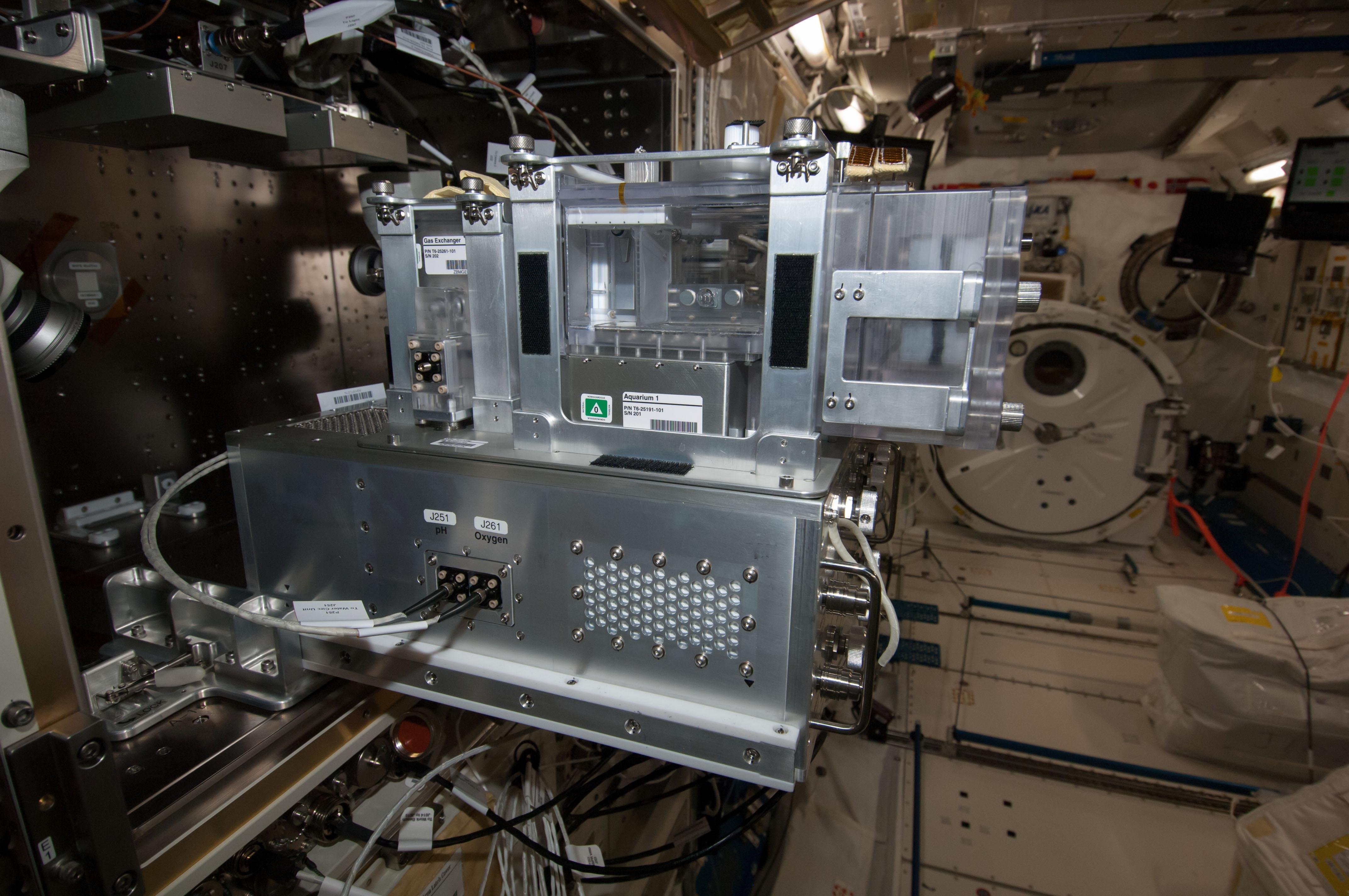- completed
[Zebrafish Muscle]
Effects of the gravity on maintenance of muscle mass in zebrafish
- Biology and Biotechnology
ISS Science for Everyone
SCIENCE OBJECTIVES FOR EVERYONE
Physical exercise and control of posture are important for maintaining muscle mass and strength. In microgravity conditions, the postural, known as anti-gravity muscles, undergo atrophy because of prominent decrease in their gravity-dependent activity. The main question of the Zebrafish Muscle experiment is whether atrophy of muscles under microgravity also occurs in zebrafish, and why that muscle atrophy occurs in microgravity.
Experiment Description
RESEARCH OVERVIEW
- Physical exercise and control of posture are important for maintaining muscle mass and strength. In simulated or actual microgravity, postural or anti-gravity muscles undergo substantial atrophy because of prominent decrease in the gravity-dependent reflection activity. The question is whether atrophy of muscles under the condition of microgravity also occurs in zebrafish and why their atrophy occurs in the microgravity.
- Proposed experiments examine the gravity-dependence of skeletal muscles in zebrafish using transgenic fish expressing Green Fluorescent Protein (GFP)-labeled muscles and Red Fluorescent Protein (RFP)-labeled cells interaction with muscles. Previous experiments revealed that the intensity of RFP is dependent on interaction with myotubes. First, the investigation of the effect of microgravity on muscle mass and fiber morphology of the transgenic zebrafish is looked at. Next, the investigation traces the recovery processes of muscle mass and functions, after the exposure of zebrafish in microgravity. Finally the examination of whether growth factors are required for the recovery process. Among growth factors that are known to be involved in the increase of muscle mass, the main focus is on growth factors that increase by physical exercise.
- It is hoped that this research enables the determination of the dependence of functional and morphological recovery of muscle, after the exposure in microgravity on the growth factor by the treatment of zebrafish with growth factor inhibitors. This research should clarify whether physical exercise, and anti-gravity reaction, share common growth factor signalings, or not, through these experiments.
DESCRIPTION
Physical exercise and control of posture are important for maintaining muscle mass and strength. In simulated or actual microgravity, postural or anti-gravity muscles undergo substantial atrophy because of prominent decrease in the gravity-dependent reflection activity. The question is whether atrophy of muscles under the condition of microgravity also occurs in zebrafish, and why their atrophy occurs in the microgravity.
Research has recently identified novel tendon-like cells that are located adjacent to skeletal muscle cells in the zebrafish trunk. In this study, the research team proposes experiments that examine the gravity-dependence of skeletal muscles in zebrafish by monitoring a transgenic zebrafish line, in which those tendon-like, and muscle cells, are labeled with red and green fluorescent protein (GFP and RFP), respectively. It is noted that the intensity of GFP is dependent on interaction with myotubes.
The research team will also investigate the effect of the microgravity on muscle mass and fiber morphology, and on morphology and intensity of GFP of the transgenic zebrafish. Second, the team investigates the expression of mRNAs and proteins in skeletal muscle, and tendon-like cells, after the exposure of zebrafish to microgravity. The team then examines which growth factors are involved in the sensitivity to gravity. Among growth factors that are known to be involved in the increase of muscle mass, the research focuses on growth factors that increase by physical exercise. This should help to clarify whether physical exercise and anti-gravity reaction share common growth factor signaling events, or not, through these experiments.
The Aquatic Habitat is installed in the Multi-purpose Small Payload Rack (MSPR) Work Volume, and is utilized for experiments with fish. It is composed of a closed water circulation system with two aquariums. Each aquarium is equipped with LED light and CCD camera, and the aquarium environment is maintained by water flow and temperature control, dissolved gas exchange, and biological filtration. The Aquatic Habitat has on-orbit maintenance capabilities, such as water quality check, and water exchange, to achieve long-term experiments up to 90 days.
Media Gallery



Applications
SPACE APPLICATIONS
Results from this investigation can provide insight into the molecular changes that cause muscles to atrophy in microgravity. Understanding the chemical signals, proteins and other cellular activity involved in muscle atrophy could help researchers develop countermeasures to keep astronauts physically strong in space during long-duration missions.
EARTH APPLICATIONS
Results from the Zebrafish Muscle investigation could identify the molecular changes involved in muscle atrophy, which could lead to the synthesis of new drugs or treatments for weakened muscles. The research could benefit patients on extended bed rest or those with limited mobility.
Operations
OPERATIONAL REQUIREMENTS AND PROTOCOLS
Eighteen zebrafish are launched, and the 1.5 month experiment is started using the Aquatic Habitat (twelve zebrafish). Fourteen zebrafish are to be chemically fixed for return to Earth, while four zebrafish are returned alive to ground.
The Aquatic Habitat is assembled and checked out in the MSPR Work Volume. Following Checkout, the zebrafish are transferred to the Aquatic Habitat to start the experiment. They are bred for approximately 1.5 months. At the completion of 1.5 months, the zebrafish are sampled and chemically fixed for return to Earth. The fixed samples are stowed under refrigerated/frozen conditions. The live zebrafish are placed in containers for return to Earth, where they are recovered at ambient conditions. Following the experiment, the Aquatic Habitat is disassembled and stowed.
Publications
PRINCIPAL INVESTIGATOR(S)
SEHARA Atsuko [Kyoto University]
Unless specified otherwise, rights to all images belong to ©JAXA



